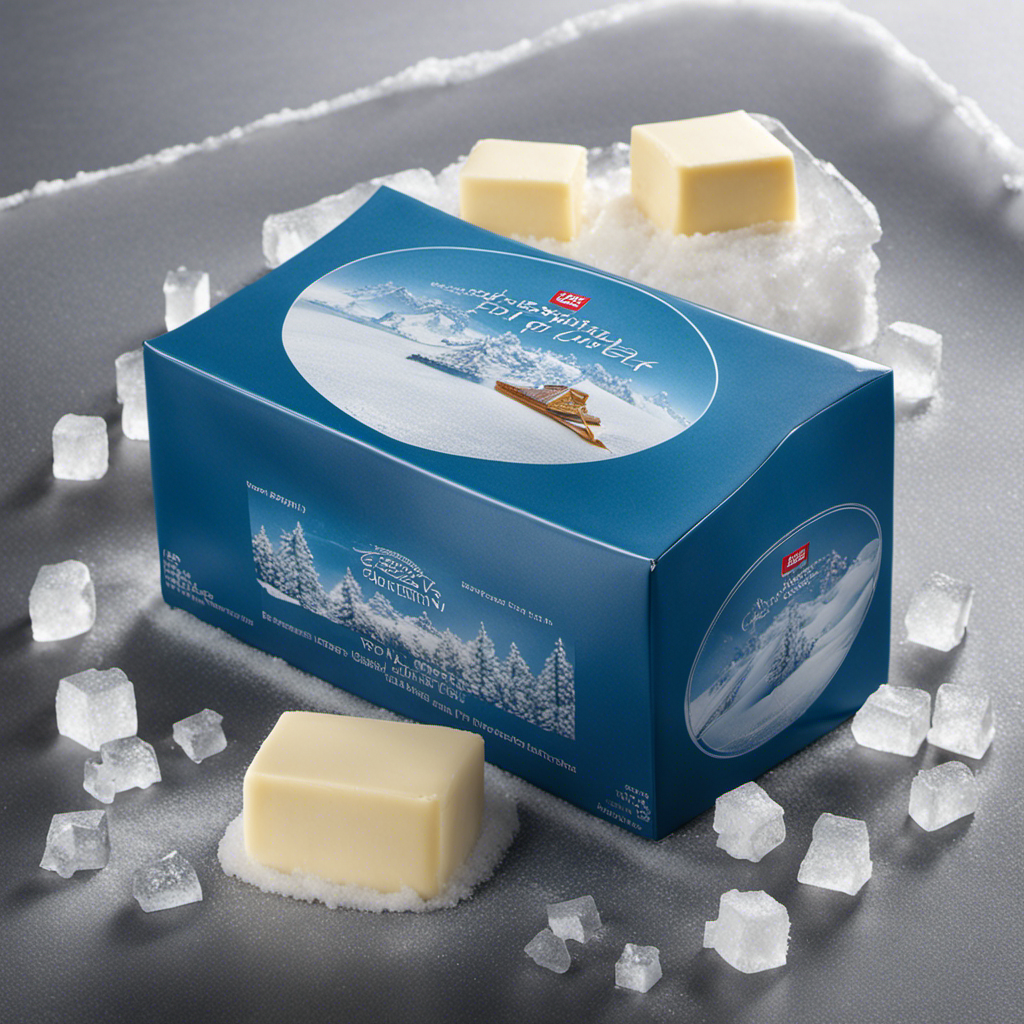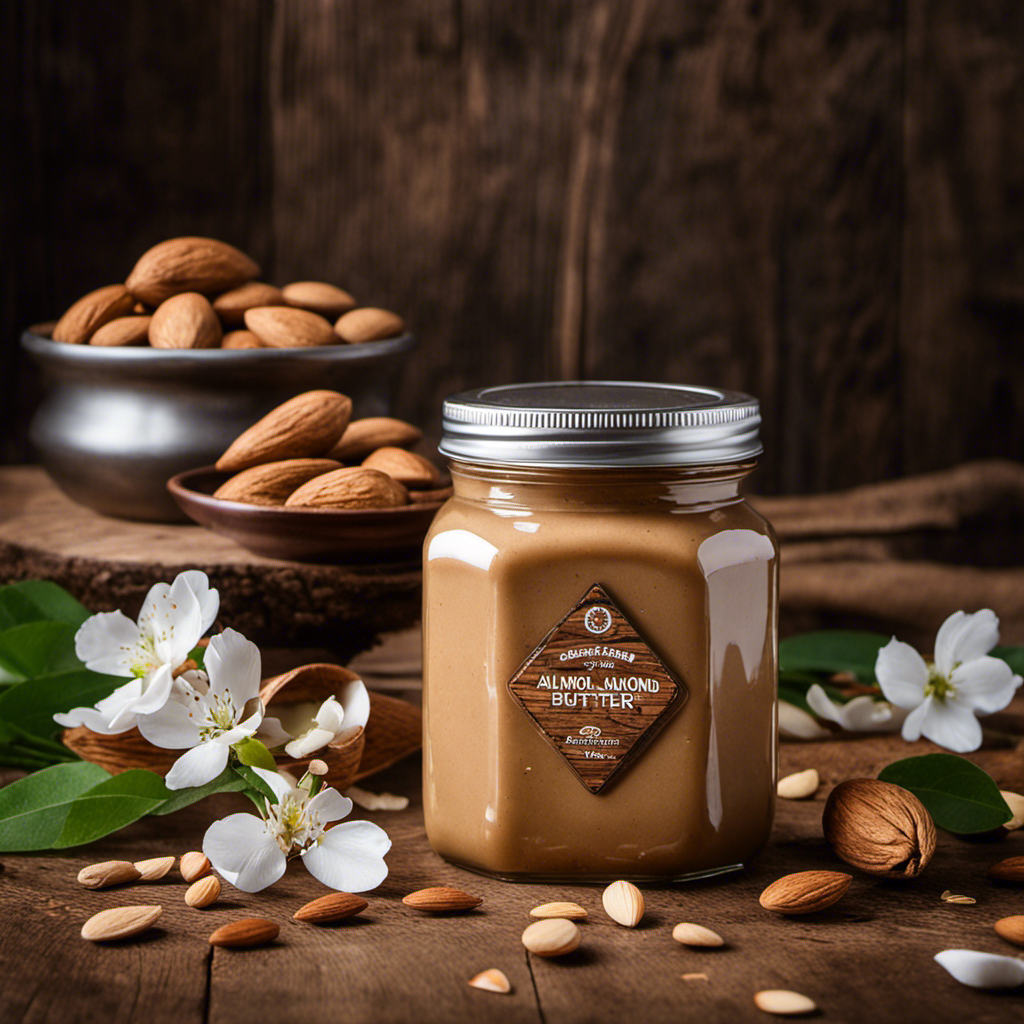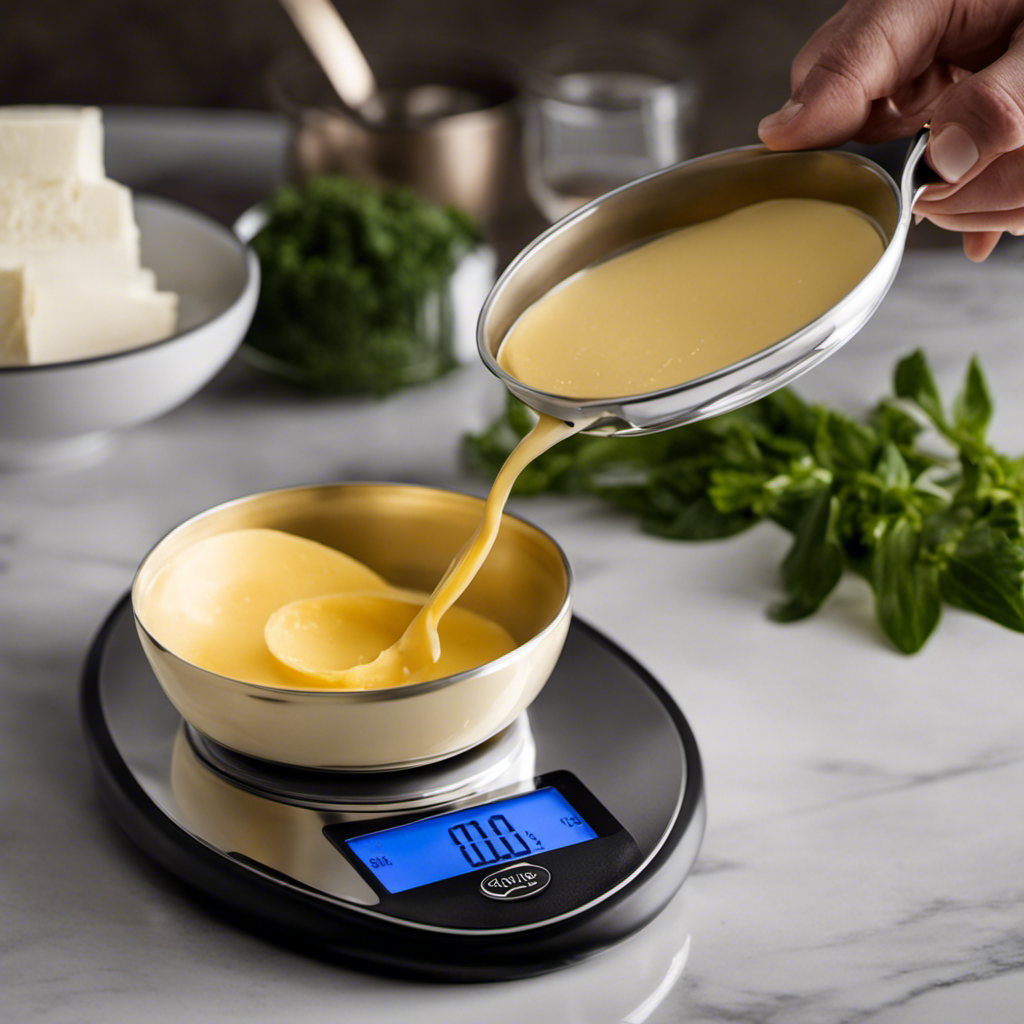As someone who is passionate about butter, I’ve often pondered the duration stick butter can remain frozen without losing its quality. Well, there’s no need to wonder any longer!
In this article, we will explore the optimal freezing time for stick butter and delve into the factors that affect its shelf life. I will also share tips on how to properly store stick butter in the freezer and identify signs of spoilage.
So, if you’re curious like me, let’s dive into the world of frozen stick butter and uncover its secrets.
Key Takeaways
- Stick butter can be frozen for up to six months.
- Proper packaging and storage techniques are crucial for maintaining the freshness of frozen stick butter.
- Temperature fluctuations, air exposure, and improper storage can lead to spoilage and decreased quality.
- Thawing methods include quick thawing in the microwave or letting the butter sit at room temperature until soft and spreadable.
Optimal Freezing Time for Stick Butter
Stick butter can be frozen for up to six months. Freezing stick butter is a common practice to extend its shelf life and prevent it from spoiling. However, it is important to follow the best storage practices to maintain its quality and taste.
When freezing stick butter, it is recommended to wrap it tightly in plastic wrap or aluminum foil to prevent freezer burn and absorption of odors. Additionally, placing the wrapped stick butter in a freezer-safe bag or container can provide an extra layer of protection.
It is important to note that the freezing duration may vary depending on the quality of the butter and the storage conditions. By following these best practices, you can safely freeze stick butter for several months while maintaining its freshness and flavor.
Factors Affecting the Shelf Life of Frozen Stick Butter
When freezing butter, factors such as temperature, packaging, and air exposure can affect how long it will last in the freezer. The freezing efficiency of stick butter is influenced by these factors, especially temperature variations.
Temperature plays a crucial role in preserving the quality and taste of butter. Fluctuations in temperature can lead to the formation of ice crystals, which can affect the texture and flavor of the butter. Proper packaging is also essential to maintain the butter’s freshness. Air exposure can cause oxidation, leading to rancidity and a decrease in quality.
To maximize the shelf life of frozen stick butter, it is important to store it properly in the freezer. By following the right storage techniques, you can ensure that your stick butter stays fresh and delicious for an extended period.
How to Properly Store Stick Butter in the Freezer
To properly store stick butter in the freezer, it’s important to consider factors like temperature, packaging, and air exposure.
Stick butter should be stored at a temperature of 0°F (-18°C) or below to maintain its quality and prevent spoilage.
It is recommended to wrap the stick butter tightly in its original packaging or transfer it to an airtight container before placing it in the freezer. This will protect the butter from absorbing unwanted odors and flavors from other foods in the freezer.
Additionally, minimizing air exposure by sealing the packaging or container properly will help prevent freezer burn, which can negatively affect the texture and taste of the butter.
Following these proper storage techniques can help extend the freezing duration of stick butter and maintain its freshness for a longer period of time.
With these storage practices in mind, it’s important to be aware of the signs of spoilage in frozen stick butter.
Signs of Spoilage in Frozen Stick Butter
If your frozen butter starts to develop a strong, rancid smell, it’s a clear sign that it has spoiled and should be discarded.
Detecting spoilage in frozen stick butter is crucial to ensure food safety and prevent any unpleasant experiences. Spoilage can occur due to various factors, such as improper storage or prolonged freezing.
To extend the shelf life of frozen butter, it is recommended to wrap it tightly in airtight packaging or use freezer bags to prevent exposure to air and potential contamination. Additionally, maintaining a consistent freezing temperature below 0°F (-18°C) is essential.
Regularly checking the butter for any signs of discoloration, off odors, or changes in texture can help identify spoilage.
Following these guidelines will help ensure that your frozen stick butter remains safe to consume for an extended period.
Tips for Thawing Frozen Stick Butter
When it comes to thawing frozen stick butter, there are a few important factors to consider.
First, quick thawing methods can be useful when you’re short on time.
Second, it’s crucial to follow proper thawing techniques to ensure the butter maintains its quality and texture.
Lastly, understanding these methods and techniques is essential for anyone who regularly uses frozen stick butter in their cooking or baking.
Quick Thawing Methods
One popular method for quick thawing stick butter is by using the microwave. Here are some tips for quick thawing techniques:
- Place the stick butter in a microwave-safe container.
- Set the microwave to the defrost setting or use a low power setting.
- Microwave the butter in short intervals, typically 10-15 seconds at a time.
- Check the butter after each interval, gently squeezing it to see if it has softened.
Using the microwave for quick thawing can be convenient, but it’s important to note that this method may result in uneven thawing or even partially melted butter if not done carefully.
For proper thawing techniques that ensure even softening without compromising the quality of the butter, continue reading the next section.
Proper Thawing Techniques
To properly thaw your stick of butter without compromising its quality, it’s important to follow these techniques. The ideal way to thaw butter is to remove it from the freezer and let it sit at room temperature until it becomes soft and spreadable. This process can take anywhere from 30 minutes to an hour, depending on the temperature of your kitchen. Avoid using the microwave or hot water to speed up the thawing time, as it can cause the butter to melt unevenly or become too soft. Patience is key when thawing butter, as allowing it to come to room temperature naturally ensures that it retains its texture and flavor.
| Technique | Thawing Time | Room Temperature |
|---|---|---|
| Room Temperature | 30 minutes to 1 hour | Ideal for preserving butter’s quality |
| Microwave | 10-20 seconds | Can cause uneven melting |
| Hot Water Bath | 5-10 minutes | Can make butter too soft |
Creative Ways to Use Frozen Stick Butter
When it comes to cooking with frozen butter, there are a few key points to keep in mind.
First, it is important to note that using frozen butter can alter the texture and consistency of certain dishes. However, it can still be used in recipes where the butter needs to be melted or incorporated into dough.
In baking, frozen butter can be grated and used to create flaky pastries and biscuits.
Additionally, frozen butter can also be used in other ways, such as spreading it on toast or using it to make a flavorful compound butter.
Cooking With Frozen Butter
If you’re cooking with frozen butter, make sure to thaw it properly before using in your recipes. Cooking techniques that involve using frozen butter can still yield delicious results if done correctly. Here are four important steps to take when thawing frozen butter for cooking:
-
Remove the frozen butter from the freezer and place it in the refrigerator for several hours or overnight. This gradual thawing process allows the butter to thaw evenly and preserves its flavor.
-
Once the butter has thawed, take it out of the refrigerator and let it sit at room temperature for about 30 minutes. This step ensures that the butter softens enough to be easily incorporated into your recipe.
-
If you’re in a hurry, you can use a grater or a knife to cut the frozen butter into small pieces. This will speed up the thawing process.
-
Finally, make sure to thoroughly mix the softened butter into your recipe, ensuring that it is evenly distributed for optimal flavor preservation.
Now that we have discussed cooking with frozen butter, let’s explore the next topic: baking with frozen butter.
Baking With Frozen Butter
Now that we’ve covered cooking with frozen butter, let’s dive into baking with it.
Using frozen butter in baking can be a game-changer. The cold temperature of the butter allows for better control of the dough, resulting in flakier pastries and lighter cakes.
One baking tip is to grate the frozen butter into the flour mixture using a box grater. This creates small, even pieces of butter that can be easily incorporated into the dough.
The cold butter also helps create pockets of steam during baking, which leads to a more tender and moist texture.
Furthermore, frozen butter can enhance the flavor of baked goods by creating a delightful contrast with other ingredients.
Other Frozen Butter Uses
To get the most out of your frozen butter, don’t forget to explore other creative uses beyond baking. Here are four alternative uses for frozen butter:
-
Sautéing: Melt a small amount of frozen butter in a pan and use it to cook vegetables or proteins. The butter adds a rich flavor and helps prevent sticking.
-
Flaky pie crusts: Grate frozen butter into your pie dough for a flakier texture. The tiny butter pieces create pockets of steam during baking, resulting in a light and airy crust.
-
Creamy sauces: Add frozen butter to sauces like hollandaise or béarnaise for a velvety finish. The slow melting butter emulsifies with the other ingredients, creating a smooth and luscious sauce.
-
Flavor enhancer: Grate frozen butter over freshly cooked pasta or steamed vegetables. The cold butter melts instantly, coating the food with a delicious and creamy layer.
Frequently Asked Questions
Can Frozen Stick Butter Be Refrozen?
Yes, you can refreeze stick butter, but it may affect the quality. Refreezing can lead to changes in texture, flavor, and overall quality. It’s best to use thawed butter within a reasonable time to maintain its freshness.
How Long Can Stick Butter Be Stored in the Freezer Before It Starts to Lose Its Flavor?
I store stick butter in the freezer using the best methods. To preserve its flavor, I wrap in foil or place in an airtight container. It can last for several months in the freezer.
Will Freezing Stick Butter Affect Its Texture or Consistency?
Freezing butter does not alter taste, but it can affect texture. The consistency may become slightly grainy once thawed. However, frozen butter can still be used as a spread.
Can Stick Butter Be Frozen in Its Original Packaging?
Stick butter can be frozen without affecting its quality. It should be wrapped in additional packaging before freezing to prevent freezer burn. Freezing preserves the texture and consistency of stick butter.
Can Frozen Stick Butter Be Used for Baking and Cooking Without Thawing It First?
Yes, frozen stick butter can be used for baking and cooking without thawing it first. It can be grated or cut into small pieces and incorporated directly into recipes.
Conclusion
In conclusion, freezing stick butter is a revolutionary technique that allows us to preserve its freshness for an astonishingly long time. With proper storage and handling, stick butter can survive in the freezer for ages, defying the laws of nature.
The signs of spoilage in frozen stick butter are practically nonexistent, ensuring that every thawed stick is as pristine as the day it was frozen.
So next time you find yourself with an abundance of stick butter, freeze away and experience the magic of eternal buttery perfection.









